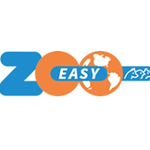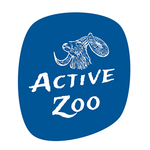Description

ZooEasy

Zootrition
Comprehensive Overview: ZooEasy vs Zootrition
As of my last update, ZooEasy and Zootrition are both specialized software solutions designed to assist in the management of animal care, albeit with different primary focuses and functionalities. Here's a comprehensive overview of each:
ZooEasy
a) Primary Functions and Target Markets:
- Primary Functions: ZooEasy is primarily focused on animal breeding management. It provides tools for keeping detailed records of animal pedigrees, health data, breeding histories, and genetic information. Additionally, it includes features for managing animal registration, studbooks, and inventory management. The software can generate reports and analyses to help users make informed breeding decisions.
- Target Markets: The main target markets for ZooEasy include zoos, breeding facilities, conservation organizations, and even some private breeders and pet owners. The software is useful for any entity involved in managing detailed and complex breeding programs.
b) Market Share and User Base:
- Market Share and User Base: As a niche product, ZooEasy caters to a specific subset of the animal management industry. It is popular among organizations that require robust breeding management solutions, and its user base is primarily composed of institutional users within the zoological and breeding communities. Detailed market share figures may not be publicly available, but its reputation and specialized features ensure a steady client base.
c) Key Differentiating Factors:
- Pedigree and Genetic Management: ZooEasy's strong focus on pedigree management and genetic data sets it apart. It has comprehensive tools specifically designed to meet the needs of animal breeding and record-keeping.
- User-Friendly Interface: It is known for its user-friendly interface that permits easy data entry and retrieval, tailored to breeding processes.
Zootrition
a) Primary Functions and Target Markets:
- Primary Functions: Zootrition is a nutrition management software designed for detailed dietary planning and record-keeping for animals. It allows users to calculate nutritional needs, plan diets, track consumption, and ensure optimal health through balanced nutrition. Zootrition provides nutritional analysis, feeding protocols, and food inventory management.
- Target Markets: Zootrition primarily targets zoos, aquariums, animal sanctuaries, and wildlife rehabilitation centers. Any organization or facility that requires comprehensive management of dietary needs for diverse animal populations would benefit from its use.
b) Market Share and User Base:
- Market Share and User Base: Zootrition also occupies a niche market focused on animal nutrition management. While precise market share data may not be publicly disclosed, its utility in dietary planning positions it well within zoos and related institutions. Its user base is largely comprised of nutritionists and animal care professionals in facilities that manage various species with diverse dietary requirements.
c) Key Differentiating Factors:
- Nutritional Focus: Zootrition stands out for its detailed nutritional and dietary analysis capabilities. It's specifically tailored to address dietary planning and management, which is its primary strength.
- Comprehensive Dietary Database: It includes an extensive database of food items and their nutritional values, which is essential for creating balanced diets.
Comparison Summary
- Functionality and Focus: ZooEasy excels in pedigree and genetic management, while Zootrition specializes in dietary and nutritional planning.
- Target Audience: Both target similar markets like zoos and conservation organizations but cater to different departments within those institutions—with ZooEasy targeting the breeding and genetic management teams, and Zootrition focusing on animal nutritionists and diet planners.
- Market Share and User Base: Both are niche products with strong reputations in their respective areas. Exact figures on market share may not be publicly available, but each has established a presence in the zoo community due to their specialized functions.
- Differentiation: The main differentiation lies in their core functionalities—ZooEasy is about genetic data, breeding, and demographics, while Zootrition handles the nutritional aspect of animal care.
Overall, both ZooEasy and Zootrition offer valuable tools to meet the needs of zoological institutions, but they focus on distinctly different aspects of animal management.
Contact Info

Year founded :
1993
Not Available
Not Available
Netherlands
http://www.linkedin.com/company/zooeasy

Year founded :
Not Available
Not Available
Not Available
Not Available
Not Available
Feature Similarity Breakdown: ZooEasy, Zootrition
When evaluating zoo and wildlife management software, such as ZooEasy and Zootrition, it's important to consider their core similarities, differences in user interfaces, and unique features. Here is a breakdown of these aspects:
a) Core Features in Common
1. Animal Records Management:
- Both platforms offer comprehensive systems for managing detailed records about each animal, including species information, medical history, breeding data, and more.
2. Breeding and Genetics:
- They provide tools for managing breeding programs, tracking genetic information, and preventing inbreeding, which is crucial for maintaining healthy populations.
3. Nutrition Management:
- Both systems offer features to help manage and optimize animal diets, although this is a more robust feature of Zootrition, as nutrition is its primary focus.
4. Health Monitoring:
- Both platforms allow for tracking veterinary care and health records to ensure the well-being of animals.
b) User Interface Comparison
ZooEasy:
- The user interface is typically more general-purpose, designed for broader animal management applications. It tends to be flexible, allowing users to customize views and reports based on their specific needs. The design may focus more on ease of navigation and accessibility to a variety of functions.
Zootrition:
- As this software is primarily focused on nutritional aspects, its UI is more specialized in providing detailed dietary planning tools. It often includes features like nutritional analysis graphs, tables, and recommendations, which can make the interface appear more technical but very useful for nutritionists and veterinarians.
c) Unique Features
ZooEasy:
- Pedigree Analysis: Offers advanced tools tailored for pedigree tracking and genetic management, often with visual pedigree layouts.
- Behavioral Observations: This feature allows tracking and analysis of animal behavior over time, which is less common in strictly nutritional software like Zootrition.
Zootrition:
- Diet Formulation: Provides advanced capabilities for formulating and adjusting animal diets based on nutritional needs, available ingredients, and cost considerations. This feature is particularly detailed and is Zootrition's forte.
- Nutrient Database: Comes with an extensive database of feedstuffs and their nutritional values, facilitating precise diet formulation and adjustments more effectively than other systems primarily focused on general management.
In summary, while both ZooEasy and Zootrition share core features related to animal records and health management, their strengths lie in different areas—ZooEasy in genetic and overall zoo management, and Zootrition in specialized nutritional management. The choice between them would largely depend on the specific needs of the zoo or wildlife facility.
Features

Not Available

Not Available
Best Fit Use Cases: ZooEasy, Zootrition
ZooEasy and Zootrition are software solutions designed to meet the unique needs of specific sectors within animal management and nutrition.
a) Best Fit Use Cases for ZooEasy
Types of Businesses or Projects:
- Zoos and Aquariums: ZooEasy is particularly useful in the management of zoos and aquariums due to its robust features that allow for detailed record-keeping of animal inventories, breeding programs, and genetic pedigrees. This is crucial for institutions that need to manage complex animal populations.
- Breeding Programs: Organizations focused on animal breeding, whether for conservation purposes or commercial breeding, can benefit from ZooEasy's capabilities. It helps in tracking genealogy, health, and breeding outcomes.
- Wildlife Reserves and Sanctuaries: These organizations can utilize ZooEasy to document animal populations and their health statuses, which is essential for effective wildlife management and conservation strategies.
- Veterinary Practices: Practices that serve a diverse range of species might use ZooEasy to manage patient records and histories more effectively.
b) Preferred Scenarios for Zootrition
Scenarios:
- Zoo and Aquarium Nutritionists: Zootrition is designed to support the dietary needs of animals in zoos and aquariums. Nutritionists working in these settings can use the software to develop and manage balanced diets tailored to specific animal species.
- Animal Rehab and Rescue Centers: These centers can use Zootrition to ensure rescued or rehabilitated wildlife receive proper nutrition, which is crucial for their recovery and eventual reintroduction into the wild.
- Research Institutions: Researchers focusing on animal nutrition studies can use Zootrition to manage and analyze dietary data, supporting studies on diet, health, and longevity.
- Large-scale Animal Husbandry Operations: Facilities that manage large numbers of animals, such as research labs or agricultural operations, might use Zootrition to optimize feed formulations and improve productivity.
d) Catering to Different Industry Verticals or Company Sizes
-
Industry Verticals:
- Conservation and Wildlife Management: Both products can significantly impact conservation efforts. ZooEasy supports biodiversity through breeding and genetic tracking, while Zootrition ensures that captive animals maintain optimal health through proper nutrition.
- Veterinary and Animal Health: Zoological and veterinary sectors can leverage these tools for patient management and care insights, supporting better health outcomes through data-driven decision-making.
- Education and Research: Educational institutions with zoology or veterinary programs may use these tools to provide students with hands-on experience in animal management and nutrition.
-
Company Sizes:
- Small to Medium Organizations: ZooEasy can be effectively used by smaller zoos or wildlife sanctuaries that may not have extensive resources for animal management. Its user-friendly interface makes it accessible even without dedicated IT staff.
- Large Organizations and Facilities: Larger zoos, rescues with high veterinary needs, or commercial animal operations may benefit from Zootrition’s complex capabilities in managing large datasets and creating tailored nutritional programs.
Overall, ZooEasy and Zootrition cater to the intricate needs of managing animal populations and their nutrition, serving both small and large organizations across zoos, aquariums, research facilities, and conservation projects.
Pricing

Pricing Not Available

Pricing Not Available
Metrics History
Metrics History
Comparing teamSize across companies
Conclusion & Final Verdict: ZooEasy vs Zootrition
To provide a conclusion and final verdict for ZooEasy and Zootrition, we need to examine their features, usability, pricing, and the specific needs they address in animal management.
a) Best Overall Value
Overall Value: The best overall value depends on the specific needs of the user. If flexibility and comprehensive management of animal records are more critical, ZooEasy might offer better value. However, if the primary need is precise nutritional analysis, Zootrition would be more beneficial.
b) Pros and Cons
ZooEasy
-
Pros:
- User-friendly interface and easy-to-navigate system.
- Extensive features for animal data management such as breeding, medical records, and genealogy.
- Online access allows for updated feedings regardless of the user's location.
- Integration capabilities with other management software.
-
Cons:
- May lack depth in niche nutritional analysis compared to specialized software like Zootrition.
- Initial setup can be complex for large datasets.
Zootrition
-
Pros:
- Specializes in nutritional analysis and dietary planning specific to various species.
- Detailed nutrient databases and food analysis tools.
- Helpful for species with complex dietary needs.
- Ability to generate nutrient and energy requirement reports.
-
Cons:
- Less comprehensive in areas outside of nutrition, particularly in overall animal management.
- Interface may seem outdated or less intuitive compared to other modern software.
c) Specific Recommendations
-
Assess Needs: Determine whether the primary focus is on comprehensive animal management (including breeding and health) or on detailed nutritional analysis. This will guide the choice between ZooEasy and Zootrition.
-
Trial Versions: Where possible, test trial versions or demos of both products. This hands-on experience can reveal which system aligns best with the user’s workflow and needs.
-
Check for Integration: Consider whether users need integration with other systems and whether either software offers compatibility with existing tools.
-
Consider Support and Training: Institutional users may need significant support and training; thus, checking which company offers robust customer support and training resources can be crucial.
-
Budget Planning: Evaluate the cost against budgetary constraints, particularly when considering the scale of adoption in larger institutions.
Conclusion
-
For those prioritizing a holistic approach to animal management and relying heavily on data for breeding and medical records, ZooEasy is the more suitable choice.
-
For organizations where detailed dietary planning takes precedence, and especially when dealing with unique species requirements, Zootrition would deliver the most value.
Both products excel in their niches, and the decision should ultimately be guided by the specific needs and priorities of the user.
Add to compare
Add similar companies



